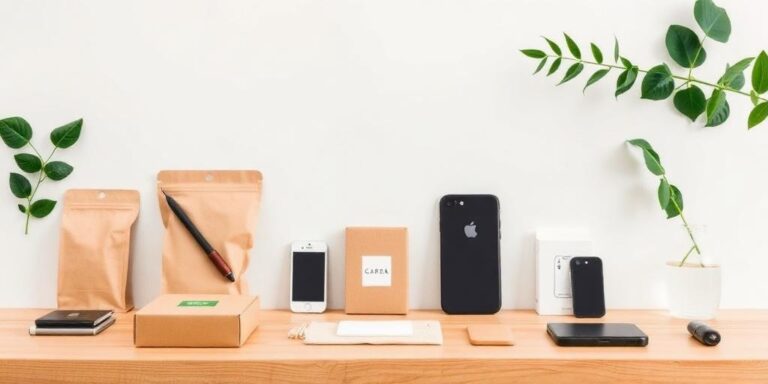Sustainable Packaging for Mobile Devices and Gadgets (2025)
As consumers become increasingly environmentally conscious, the demand for sustainable practices across all industries is intensifying. The mobile device and gadget sector is no exception. This article delves into the emerging trends and innovations in sustainable packaging for mobile devices and gadgets in 2025, exploring materials, designs, and industry initiatives.
The Growing Imperative for Sustainable Packaging
Traditional packaging materials, primarily plastics, contribute significantly to environmental pollution. Recognizing this, companies face mounting pressure to adopt eco-friendly alternatives. This shift is driven by:
- Consumer Demand: A 2024 survey indicated that 70% of consumers are more likely to purchase products with sustainable packaging.
- Regulatory Pressure: Governments worldwide are implementing stricter regulations on packaging waste, pushing manufacturers to innovate.
- Brand Reputation: Companies that prioritize sustainability enhance their brand image and attract environmentally conscious customers.
Innovative Materials in 2025
The future of sustainable packaging hinges on the development and adoption of innovative materials. Several promising options are gaining traction:
- Mushroom Packaging: Grown from mycelium, the root structure of mushrooms, this material is biodegradable and compostable. Companies like Ecovative Design are pioneering its use in protective packaging.
- Seaweed Packaging: Seaweed is a renewable resource that can be transformed into biodegradable packaging films. Notpla, a London-based startup, has developed seaweed-based packaging for various applications.
- Recycled Cardboard and Paper: Utilizing post-consumer recycled content reduces the demand for virgin materials. Innovative designs maximize protection while minimizing material usage.
- Plantable Packaging: Embedding seeds into packaging materials allows consumers to plant the packaging, turning waste into a garden. This approach is both sustainable and engaging.
Design Innovations for Minimal Waste
Beyond materials, design plays a crucial role in reducing packaging waste. Key strategies include:
- Minimalist Packaging: Reducing the amount of material used while maintaining product protection.
- Modular Packaging: Designing packaging that can be easily disassembled and recycled.
- Reusable Packaging: Creating packaging that can be repurposed or returned to the manufacturer for reuse.
- Edible Packaging: Though still in its early stages, edible films and coatings could revolutionize food packaging and potentially extend to small electronic accessories.
Industry Initiatives and Collaborations
Addressing the challenge of sustainable packaging requires collaborative efforts across the industry. Notable initiatives include:
- The Sustainable Packaging Coalition: An industry working group dedicated to advancing sustainable packaging solutions.
- Extended Producer Responsibility (EPR) Schemes: Programs that hold manufacturers responsible for the end-of-life management of their packaging.
- Partnerships with Recycling Companies: Collaborating to improve recycling infrastructure and increase recycling rates.
Challenges and Opportunities
While the shift towards sustainable packaging presents numerous opportunities, it also poses challenges:
- Cost: Sustainable materials can sometimes be more expensive than traditional options, impacting profit margins.
- Performance: Ensuring that sustainable packaging provides adequate protection for delicate mobile devices is crucial.
- Scalability: Scaling up the production of innovative materials to meet industry demand requires significant investment.
However, overcoming these challenges can unlock significant benefits, including enhanced brand reputation, reduced environmental impact, and long-term cost savings through efficient resource management.
Conclusion
Sustainable packaging is no longer a niche trend but a core business imperative for the mobile device and gadget industry. By embracing innovative materials, optimizing packaging design, and participating in collaborative initiatives, companies can pave the way for a more sustainable future. As we move towards 2025, the integration of eco-friendly practices will not only benefit the environment but also drive business success in an increasingly conscious market.




